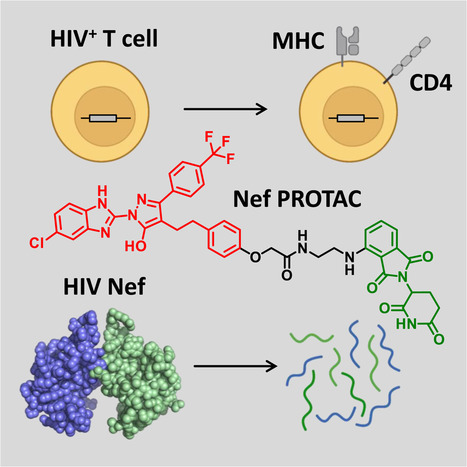Highlights
- HIV-1 Nef enhances the viral life cycle and promotes immune escape of infected cells
- PROTACs promote Nef degradation and form ternary complexes with Nef and cereblon
- PROTACs reverse MHC-I and CD4 downregulation in T cells and block HIV replication
- Targeted degradation may reverse Nef functions to help shrink HIV-1 reservoirs
Summary
The HIV-1 Nef accessory factor enhances the viral life cycle in vivo, promotes immune escape of HIV-infected cells, and represents an attractive antiretroviral drug target. However, Nef lacks enzymatic activity and an active site, complicating traditional occupancy-based drug development. Here we describe the development of proteolysis targeting chimeras (PROTACs) for the targeted degradation of Nef. Nef-binding compounds, based on an existing hydroxypyrazole core, were coupled to ligands for ubiquitin E3 ligases via flexible linkers.
The resulting bivalent PROTACs induced formation of a ternary complex between Nef and the cereblon E3 ubiquitin ligase thalidomide-binding domain in vitro and triggered Nef degradation in a T cell expression system. Nef-directed PROTACs efficiently rescued Nef-mediated MHC-I and CD4 downregulation in T cells and suppressed HIV-1 replication in donor PBMCs. Targeted degradation is anticipated to reverse all HIV-1 Nef functions and may help restore adaptive immune responses against HIV-1 reservoir cells in vivo.
Published March 19, 2024:



 Your new post is loading...
Your new post is loading...







